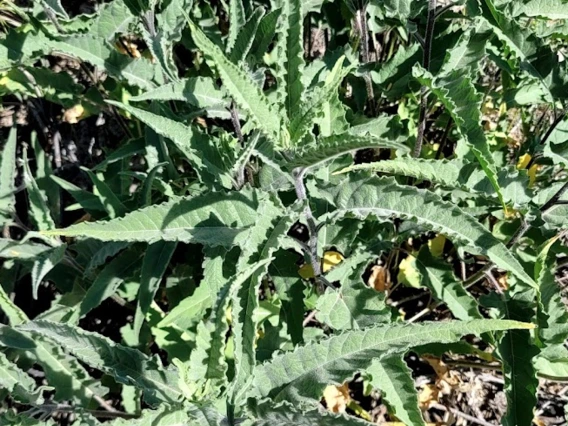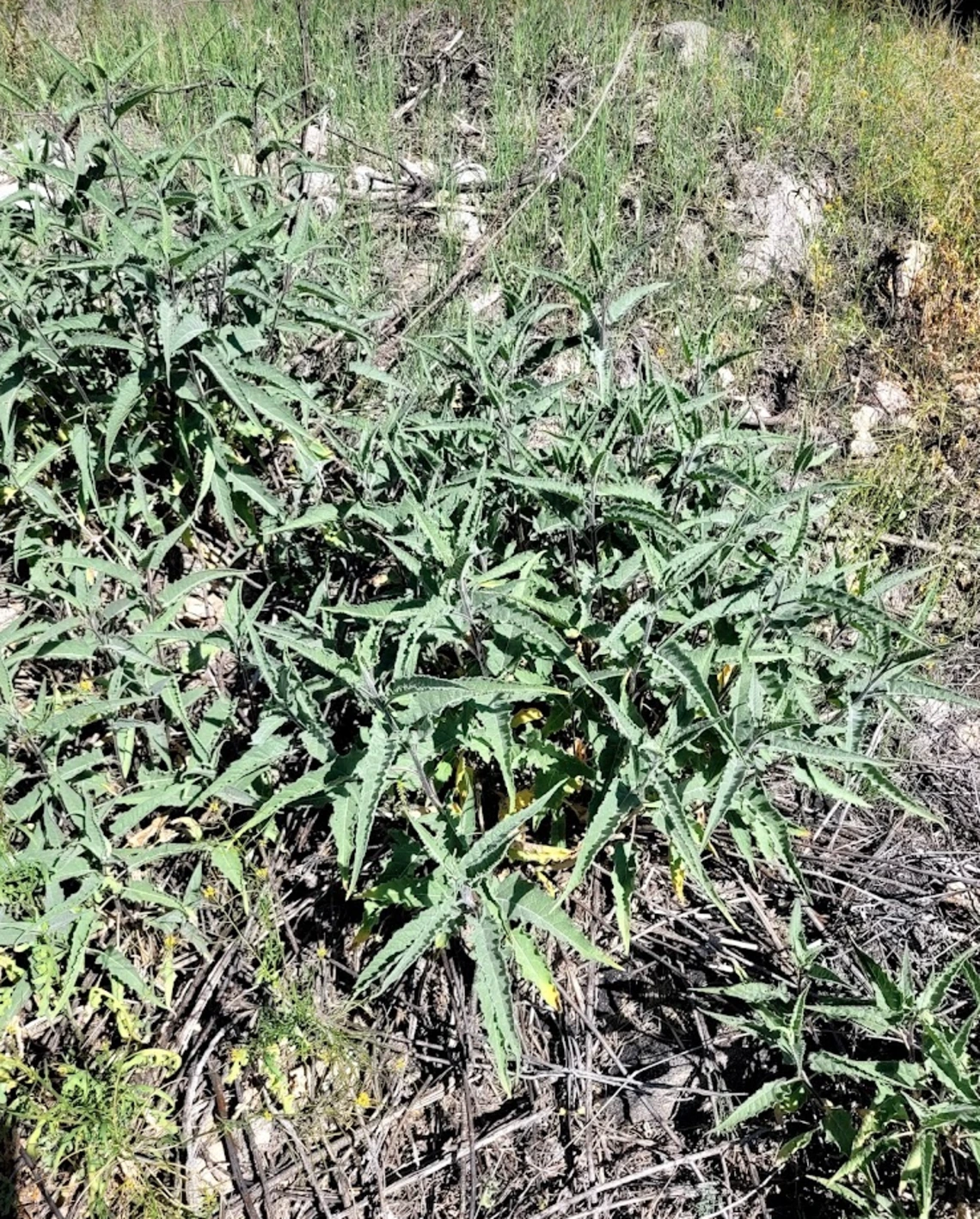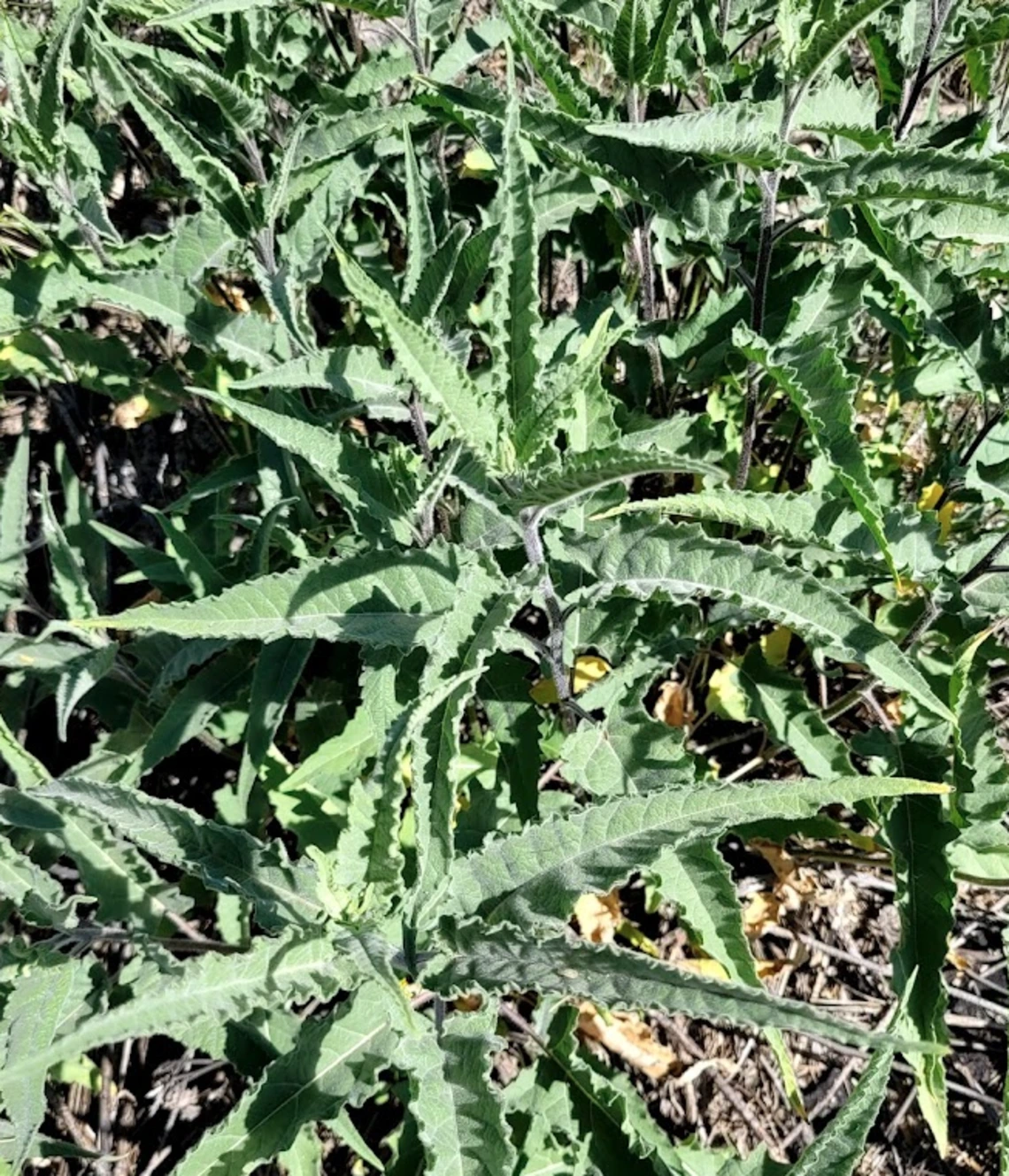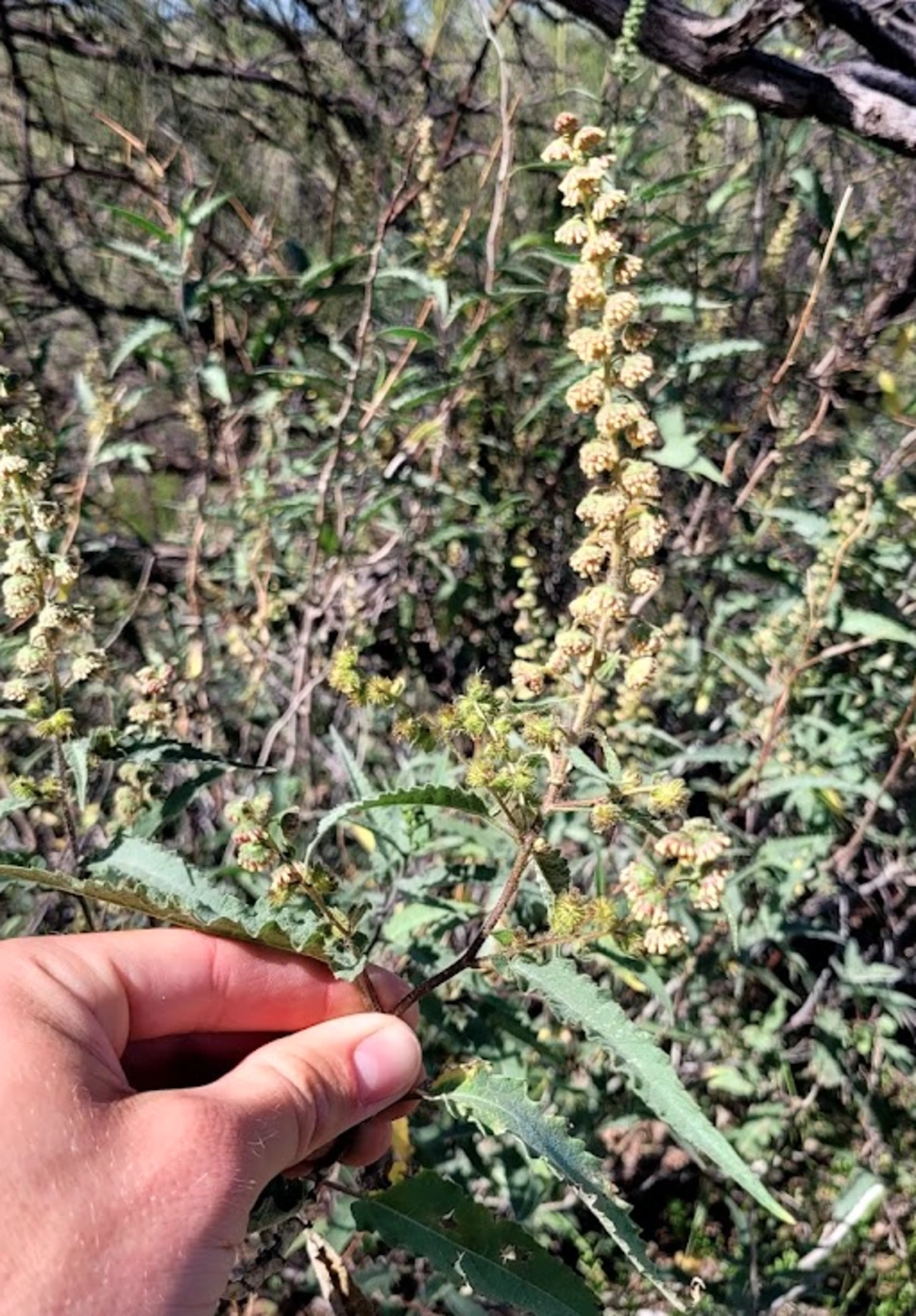Family: Asteraceae
Compound: Amb amb
Synonyms: Franseria ambrosioides, Xanthidium ambrosiodes
Geographic Origin: Sonoran Desert region, south into Durango and east into Chihuahua
Characteristics: A subshrub or shrub typically growing between 0.6-2m (2-7ft) tall with multiple erect stems and leaves covered with minute soft hairs containing glandular hairs that produce an aromatic sticky sap. Leaves are dark gray-green, alternately arranged, usually 8 inches long, and lanceolate to triangular in shape with coarsely toothed margins. These plants are dioecious, with inconspicuous male flowers on an unbranched raceme and female flowers occurring proximal to the male flowers appearing in early to late spring. Fruit is a small, 10.15-12mm (0.4-0.5in), ellipsoid/ fusiform burr with spines and hooks.
Natural History: Common in dry riparian areas, desert washes, and canyons between 152-1219m (500-4,000ft) in elevation. Canyon ragweed attracts pollinators such as butterflies, bees and other small insects, and it may be eaten by birds and small mammals.
Cultivation Notes: Prefers full sun to partial shade. Can tolerate dry conditions but extra water during dry periods may help maintain a fuller, healthier appearance. Its pleasing appearance, drought tolerance and usefulness to pollinators make in an excellent choice for native gardens and restoration sites.
For general plant propagation information, click here
Ethnobotany: The plant can be used medicinally as an analgesic for respiratory problems. A decoction from crushed roots was used to treat menstrual hemorrhage and pain while a poultice of warmed leaves was used to relieve chest congestion. Decoction of crushed roots taken by women for pains and menstrual hemorrhage.
Citations:
UC Berkeley. Retrieved July 10, 2023
Southwest Desert Flora. Retrieved July 10, 2023
Calscape. Retrieved July 10, 2023
SEINet Arizona – New Mexico Chapter. Retrieved June 7, 2024.







